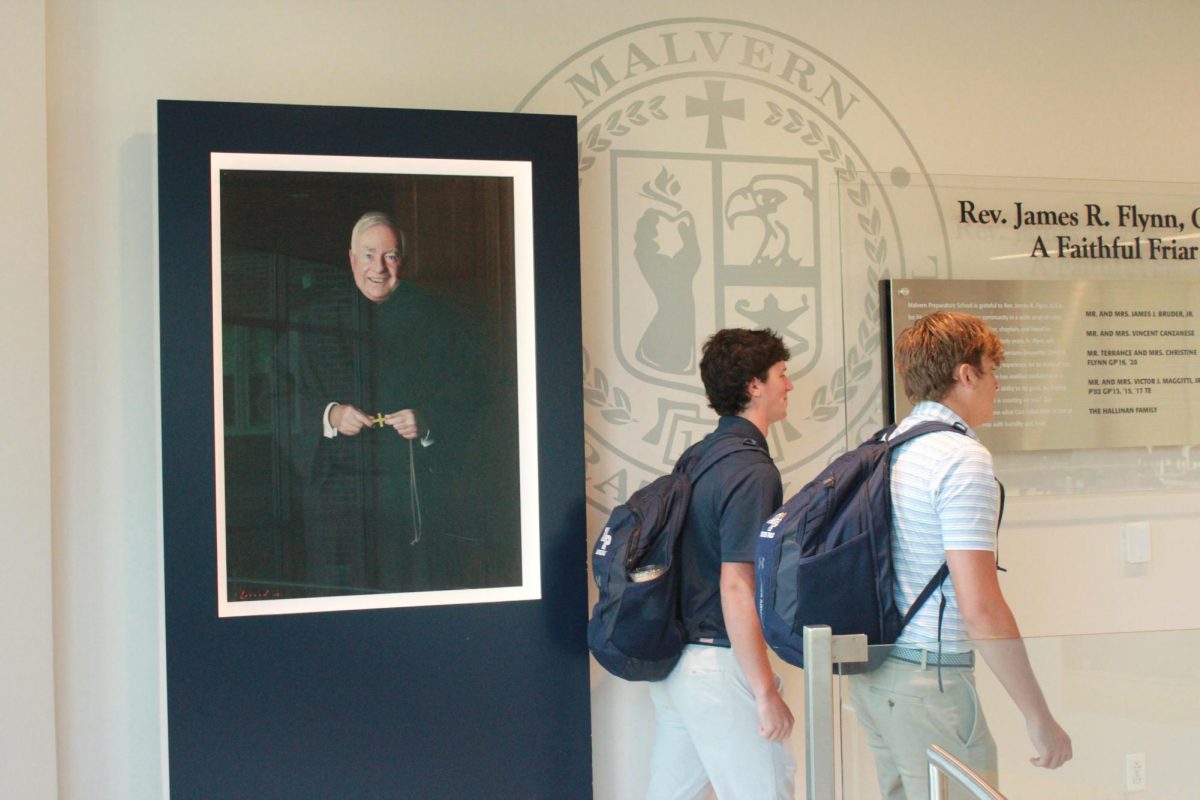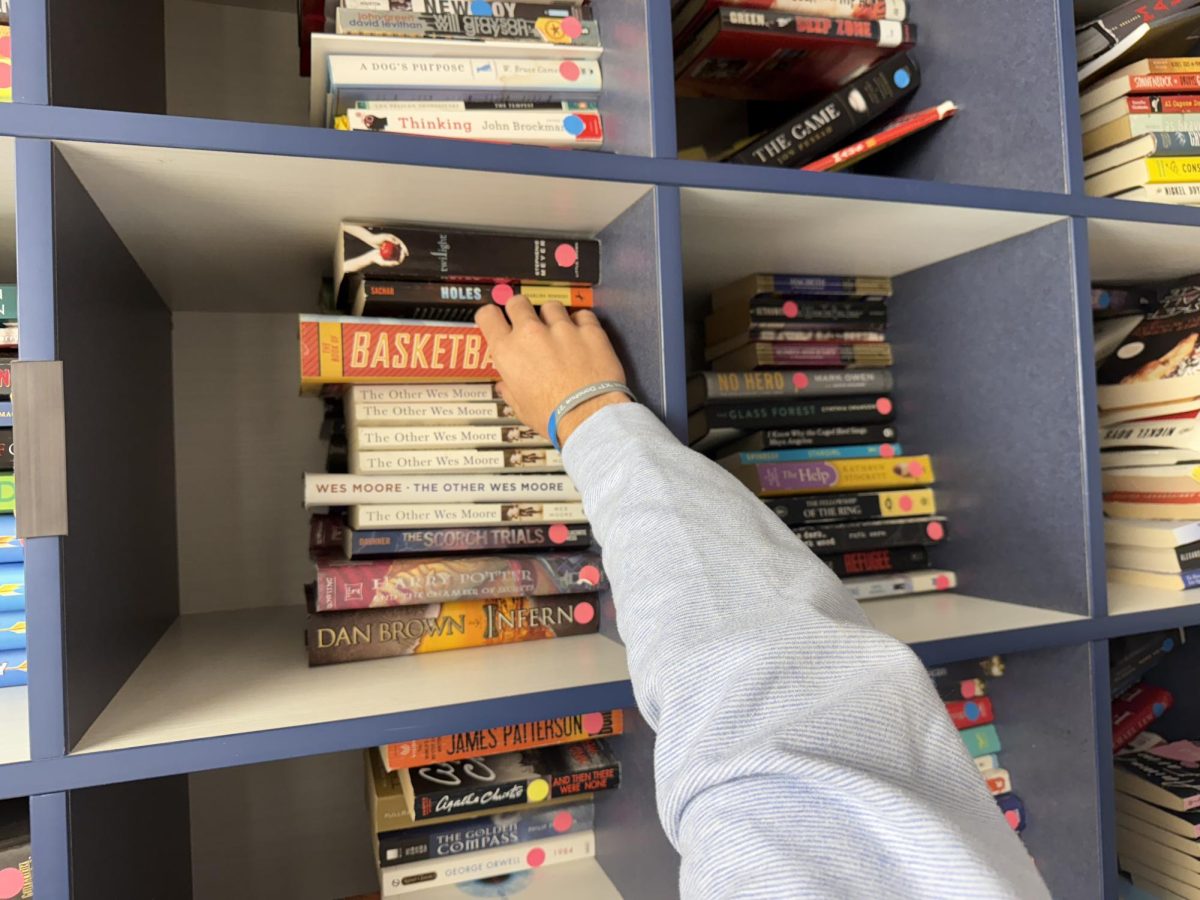Katherine Christen, a Simon’s Heart Program Coordinator, came to Malvern on Feb. 22 to educate students on the warning signs of Sudden Cardiac Arrest and equip them with the knowledge to act in an emergency. Her lesson included CPR techniques and an explanation of how to use an Automated External Defibrillator (AED).
“In terms of what Simon’s Heart does, we’re a small nonprofit. We work in Conshohocken and the greater Philadelphia area. The main mission is preventing sudden cardiac arrest, specifically in youth athletes. In general, our programs include CPR education and placement advocacy in terms of political advocacy and heart screenings” Christen said.
Christen didn’t have that deep of an understanding before she started working for Simon’s Heart. But as she started working for them, she was introduced to how important it is to understand Cardiac Arrest and what to do in a situation like that.
“I came to Simon’s Heart right out of college, and I can honestly say I didn’t know very much about sudden cardiac arrest. . . I’d say that most of my education on heart health on-site and cardiac arrest came from working for Simon’s heart. Same as my CPR, education, understanding AEDs, So I guess all my bases for understanding FTA comes from working here,” Christen said.
Christen mentions how it is important to know how sudden cardiac arrest differs from a heart attack or heart failure; she mentioned there is a distinct difference and knowing the differences can help save lives.
“I think what’s important is first distinguishing the difference. A heart attack is when one of those blood vessels suddenly becomes blocked where sudden cardiac arrest is like an electrical issue. This is different from a cardiac arrest, when instead of one single blood vessel in the body having no blood flow, the entire body suddenly has no blood flow. So your heart just comes to a complete stop. In sudden cardiac arrest, usually, that person is in motion, and then they just drop” Christen said.
Christen tells me that it is something to be aware of but she also tells me how people can get misdiagnosed with things like epilepsy and this can be a problem. She also mentions that if you are abnormally fatigued or just don’t feel right you should tell someone.
“Sometimes, people get misdiagnosed with epilepsy because they’re having seizures, rapid heart rate, and things like that. When we talk about warning signs, a lot of what we like to say about sudden cardiac arrest is that it feels abnormal. So it’s not, you know, you went on a run, and now you’re tired. That’s okay. But, you know, extreme fatigue when you’re sitting in class or extreme heart rate when you’re just standing or doing, you know, low-effort activity, it’s essential to look out for those things,” Christen said.
According to Simon’s Heart Website, warning signs for sudden cardiac arrest in children include:
- Chest pain or discomfort during exercise
- Fainting or extreme dizziness during or just after an athletic activity
- Racing heart or palpitations
- Unexplained shortness of breath during exercise
- Excessive fatigue during exercise
- Change in exercise tolerance
Not everyone exhibits all of these symptoms. They may have just one or two of them. At least 50 percent of children who die from sudden cardiac arrest have no symptoms before the event (Simon’s Heart Website).
Wanting our community to feel empowered to help in critical situations, Christen and Simon’s Heart not only educate students about Sudden Cardiac Arrest, but also train students in CPR and AED usage.
“I think the biggest thing that we try to focus on is reducing that fear from such a young age of doing CPR or using an AED. . . I think a lot of people who hear about CPR aren’t using an AED, and it’s sort of like a fearful idea. If you’re not certified that can make the fear even greater, so we push you to know hands-only CPR [which] you can do without being certified, and you’re protected under the Good Samaritan Act” Christen said.
Christen explains that using an AED may seem scary, but it’s the mission of Simon’s Heart to help everyone learn these skills and then use them in a situation where someone is going into cardiac arrest.
“In terms of an AED, I mean, that’s restarting a heart, so it is knowing where that is, [and] understanding that it’s easy to use. Although [using an AED] can seem like a daunting thing, I think it’s super important to understand that, it doesn’t matter how old you are; you can save a life. So that’s sort of what our mission is” Christen said.
Dr. William Mills is the Head Athletic Trainer here at Malvern. With a deep well of knowledge about the human body, Dr. Mills keeps our athletes healthy and performing at their peak. Dr. Mills wanted to find a program that would come to Malve rn Prep to teach the importance of Sudden Cardiac Arrest and heart attacks, how to use an AED, and how to do CPR the right way.
rn Prep to teach the importance of Sudden Cardiac Arrest and heart attacks, how to use an AED, and how to do CPR the right way.
“Well, you know what, I did not know there was an education component about it when we first met; yeah, what I was looking for was to do the cardiac testing and do it massively in our gym. So, that conversation led to what Simon Heart does with the education component. So, in my understanding, for us to establish the testing component we want, we want to do the whole program; we just don’t want to do one part of it,” Dr. Mills said.
In a discussion about better identifying and educating potentially at-risk athletes, Dr. Mills knows the importance of educating as many people as possible about Sudden Cardiac Arrest.
“I think that’s what Simon Heart wants as well. Obviously, you know, just identifying some issues with some athletes is one thing. But the other issue is when something does occur out in the field, to have as many people as possible educate them on what they can do [to act fast and help], and that’s where Simon Heart came in,” Dr. Mills said.
Mr. Schiller, the Head of Varsity Water Polo and a gym teacher here at Malvern, also gave his input on Simon’s Heart. Mr. Schiller has trained over 30 faculty members in CPR. In addition, he trains the freshman class every year in performing CPR. He highlights the importance of learning CPR, especially at a young age.
“Knowing hands-only CPR can save a life in itself. But it also involves knowing what to do with an AED. If one is available, we have them all over campus here. And almost pretty much any restaurant or place you go will have an AED. One of those two things is knowing CPR to keep the heart beating or making the heartbeat and deliver oxygenated blood throughout the body. Then, the heart should be able to restart when a heart goes into Sudden Cardiac Arrest. And as Simon’s heart people told everybody in their assembly is the number one killer of youth. Kids, teenagers, and young adults in the United States. Having a little bit of knowledge can go a long way,” Schiller said.
Christen and Simon’s Heart’s mission is to save lives but even more is to prepare youth incase of a situation like this happens to you or someone you know.
“So the younger you learn, I think, the better because you just feel that more prepared, that much more prepared. And maybe that much more, a little more confidence about your ability to potentially save someone’s life,” Christen said.







